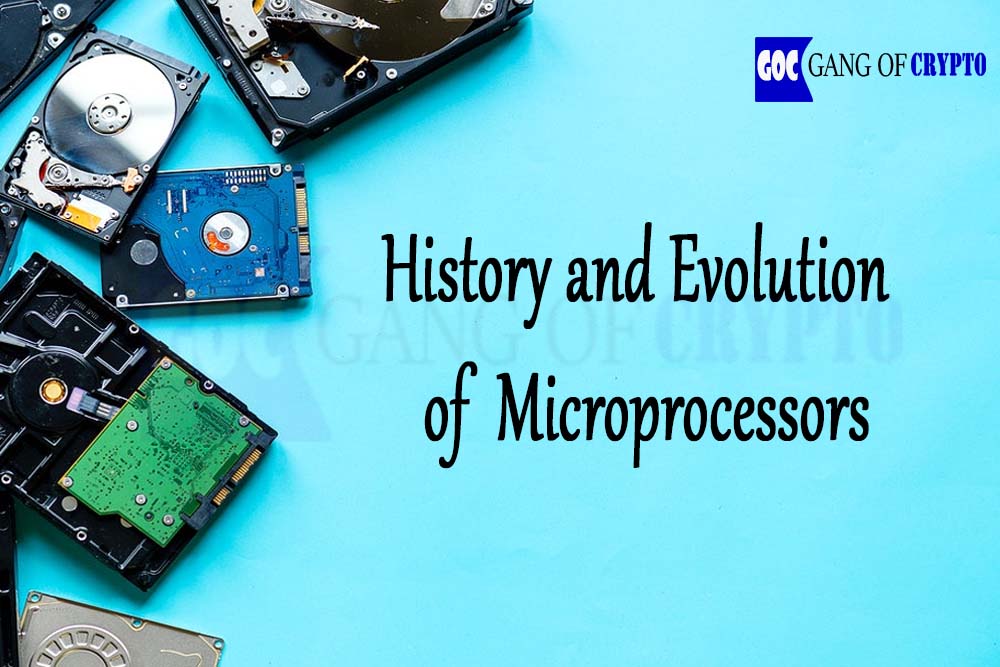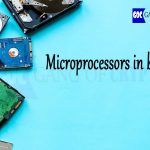History and Evolution of Microprocessors
History of Microprocessors
Microprocessors ware invented in early 1970’s for use in embedded systems, Later it turned out to be a useful invention even for small machines which we use in home. Microprocessors are used in many places like in phones, cars, etc. Micro controllers are advanced type of microprocessor. We see a time chart when and how these came:
- 1823 Baron Jöns Jacob Berzelius discovers silicon (Si), which today is the basic component of electronics.
- 1903 Nikola Tesla patents electrical logic circuits called “gates” or “switches”.
- 1947 John Bardeen, Walter Brattain, and William Shockley invent the first transistor at the Bell Laboratories on December 23, 1947.
- 1956 John Bardeen, Walter Brattain, and William Shockley are awarded the Nobel Prize in physics for their work on the transistor.
- 1958 The first integrated circuits are developed by Robert Noyce and Jack Kilby.
- 1960 IBM develops the first automatic mass-production facility for transistors in New York.
- 1971 Intel 4004, first commercially available microprocessor.
Referred from here
Evolution of Microprocessors
Likewise, the generations of computers, Microprocessors are divided into five generations named first generation, second, third, fourth, and fifth generations. As said Microprocessors have became a one of the most useful inventions of world because of its use in small gadgets like cell phone, TV to rockets. They made their part as unique and useful. How the evolution of microprocessors took we see here.
First Generation Microprocessors
This is the first and basic type of Microprocessors. The process takes place in this in a sequential order. It is invented in the year 1971-1972 by inter corporation and named 4004 as it was a 4-bit processor. The instructions in this are processed one by one i,e sequentially. Pointer points to first instruction then does the 3 steps fetch, decode, execute the instruction. After the first instruction is completely executed it moves to the next. The pointer increments by one in only single(forward) direction.
Second Generation Microprocessors
The second generation Microprocessors were introduced by Intel again and named them as 8008 as they are 8-bit Microprocessors. These were invented by over-lapped fetch, decode, and execute the instructions.The first generation microprocessors mainly differs with second generation microprocessors in use of new semi-conductor technology to manufacture the chips.
Arithmetic and logical operations can be performed using this generation processors. Second generation computers are faster in fetching, decoding and execution compare to first generation microprocessors.
Third Generation Microprocessors
The Third generation Microprocessors were introduced by Intel again in year 1978. These are 16-bit processors and act like a mini computer. The process, internal structure everything is different in third generation Microprocessors compared to first and second. These are represented by Intel’s 8086, Zilog Z800 and 80286.
Fourth Generation Microprocessors
The Fourth Generation Microprocessors were invented in the year 1985, as the first of its model Intel 80368 came in. These Microprocessors are very advanced and contains millions of transistors so it can be used in small home appliances like mixer, TV, etc. These are 32-bit Microprocessors.
Fifth Generation Microprocessors
The Fifth Generation Microprocessors were invented in the year 1995 and we are also using the same now, that is 1995-present. These are the most advanced version of Microprocessors as we know. These consists of more than 10 million transistors and multiprocessing, Multiple CPU’s can run in a single system. Some of the examples of fifth generation Microprocessors are Itanium, Pentium 4,etc.


